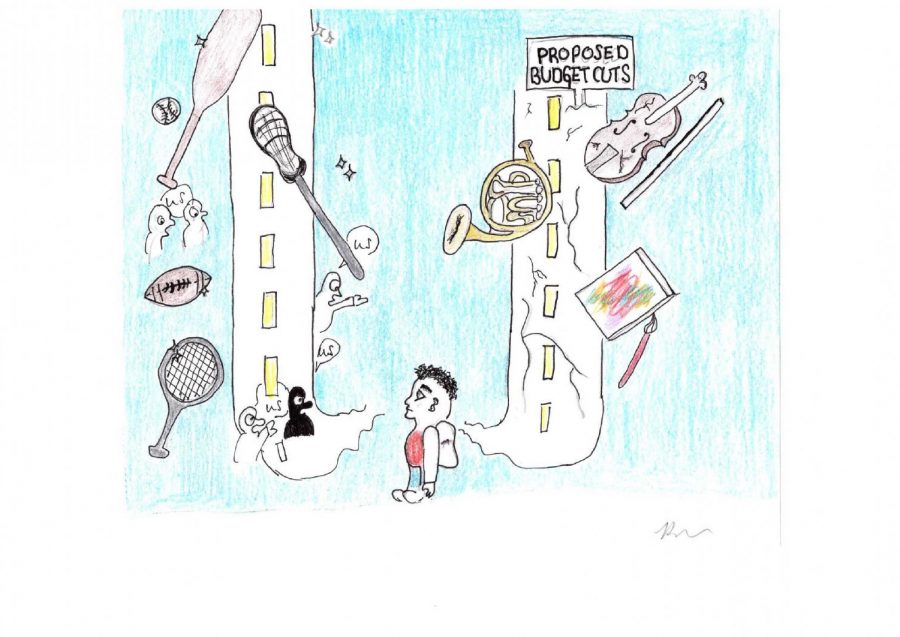Young students need more access to art programs

October 30, 2018
ETHS administrators are constantly encouraging students to get involved, but this proves to be difficult when students don’t have access to art programs at a young age.
In elementary school, kids are encouraged by parents, teachers, and friends to try all activities, but traditionally, society emphasizes sports programs and ignores the importance of art programs for young children. This phenomenon, compounded by the financial limitations many families face, prevents many young students from pursuing extracurriculars in art.
According to a Pew Research study analyzing parenting in America, 73% of parents say their children have participated in a sports extracurricular in the past 12 months, whereas only 54% have participated in an art, music, or dance program. The same study found that while 59% of families with an annual income of $30,000 had children who participated in sports extracurriculars, only 41% of the same families had children who participated in art, music, or dance programs.
One explanation for this disparity is that many sports programs have financial aid options, giving more students the opportunity to play sports than to participate in an art program. For example, American Youth Soccer Organization (AYSO), a popular soccer team in Evanston, states on their website that “Evanston AYSO is inclusive and supportive: all children are able to participate, without regard to… financial constraint.” Some Evanston schools, such as Chute Middle school, allow students who are exempted from regular school fees to participate in their sports programs for free.
In addition to financial accessibility, sports offer other sources of intrigue. Sports are seen, particularly in low-income communities, as a way out of poverty and a path to exclusive brand deals, instant celebrity, and of course, millions of dollars. With sports comes scholarships to expensive colleges that would otherwise leave some families in huge amounts of debt. There are also some programs that specifically target low-income communities for sports recruitment. Though they are helpful for many kids, the implications of these programs is that by drawing students towards sports programs, they draw — however implicitly — them away from art programs, creating a cycle of primarily middle and upper class students exclusively participating in those programs.
The benefits of art education for young students are numerous and far-reaching, according to ETHS art teacher Marla Seibold.
“[Art] is a place for [students] to potentially find success and do something that they don’t normally do in any of their other classes. You can express yourself in many ways, in a different way than students have access to in many other classes,” she explains.
Art teaches students valuable skills, such as problem solving, according to Seibold, which can be valuable for all ages. It gives a platform to students to express themselves in a less academic setting, which can be helpful to many students who seek a more creative outlet.
Evanston efforts, such as the Evanston Art Center, are an effective example of making art more accessible to everyone.
According to Christena Gunther, the Director of Education at The Evanston Art Center, The Evanston Art Center aims to make the arts accessible to everyone by offering scholarships to kids or adults to take classes for a lower rate or free.
However, many children do not have the same opportunities that are available because of institutions like the Evanston Art Center. Art programs across the country are lacking in funds and resources, if they exist in neighborhoods at all.
Despite the fact that a 2017 University of Pennsylvania study found that access to arts and culture education in low-income neighborhoods are “significantly” linked to better health, schooling, and security, the Trump administration wants to dramatically cut the budget of the National Endowment for the Arts, the very federal agency that funded the University of Pennsylvania study.
This attack on the nation’s top art organization is reminiscent of society’s view towards art as a whole.
“I think about things like opera and the symphony that really you need to have a ton of money to appreciate, [which] are the ways that culture is disseminated… so by cutting off access, the ability for people who can’t afford them to be able to see them is going to suffer. The arts will still be around, but the access for lower-income will be hurt,” Seibold says.
Ensuring that all children have access to art programs should be just as much a priority their access to sports. If all District 65 schools were to embrace art programs as much as they do sports, and make strives to widen the accessibility of art programs for all students, then schools would be that much closer to improving the lives of many children.









